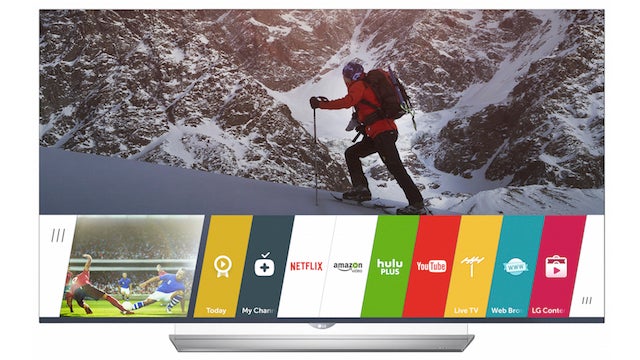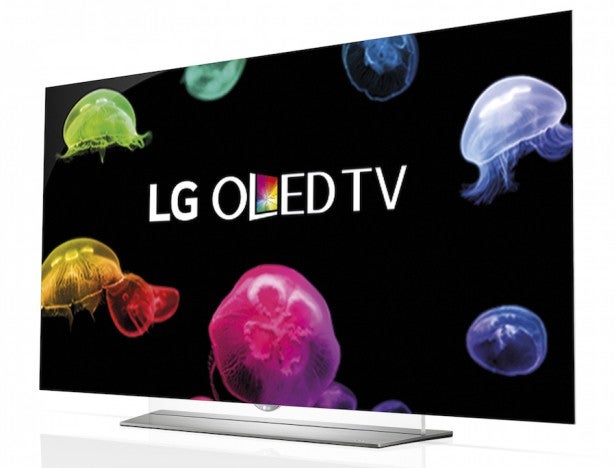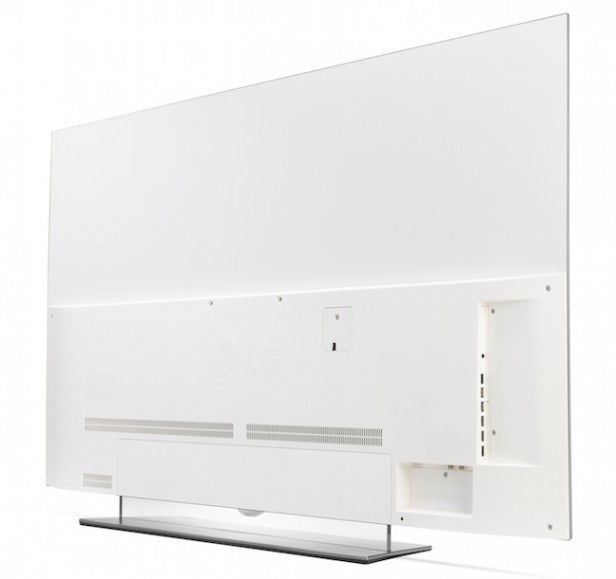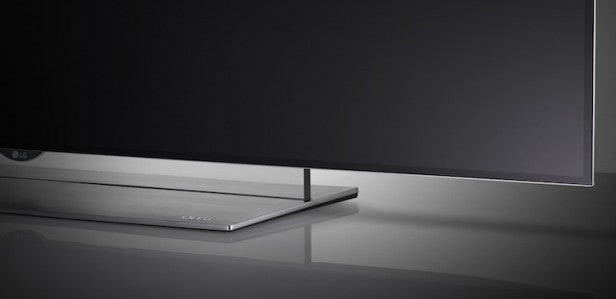LG 65EF950V Review
LG 65EF950V
LG's first flat OLED TV flirts with perfection

Sections
- Page 1 LG 65EF950V Review
- Page 2 Picture Quality Review
- Page 3 Sound, 3D and Conclusions Review
Verdict
Pros
- Extraordinary contrast and 4K detailing
- Many people will prefer its flat screen
- About as pretty as a TV can get
Cons
- Dimming at the screen's edges
- Issues with sustaining light control at just above black
- Motion handling could be better
Key Specifications
- Review Price: £4999.00
- 65-inch OLED screen
- Native 4K UHD resolution
- WebOS operating system
- Multimedia playback via DLNA and USB
- It's got a flat screen!
What is the LG 65EF950V?
The 65EF950V is a big deal. As well as showing off LG’s latest OLED technology, it’s also the firm’s first mainstream stab at using OLED in a flat rather than curved screen. This removes in an instant one of the biggest hurdles to OLED adoption for many serious AV fans. With pricing starting at £4,999 it’s also eye-catchingly affordable for a 65-inch 4K UHD OLED TV.
LG 65EF950V – Design and Features
The 65EF950V is one of the most beautifully crafted TVs I’ve ever seen and makes a mockery of the idea curved designs always look better than flat ones. The screen’s incredible sub-5mm depth is emphasised by its flatness and makes previous curved designs look unnecessarily bulgy by comparison. The metallic silver trim around the barely-there black frame and glossy white rear look great and I was seriously impressed with the TV’s build quality. 
I’m not as big a fan of the TVs back, which is a few cm deeper over its bottom third or so. However, LG was probably forced to make this design concession to make room for the TV’s video processing circuitry, tuners and speakers.
The speakers go a long way to justify the size increase – LG teamed with audio gurus at Harman Kardon to come up with the 65EF950V’s sound system.
LG could have ‘done a Samsung’ and used some sort of external connections box to reduce the need for a deep area on the 65EF950V’s rear. But, thankfully, the connections are all built onto the TV’s rear. Connections on offer include four HDMIs, three USBs, Freeview HD and satellite tuner inputs, plus an ethernet network port and Wi-Fi/Bluetooth wireless connections.
The network options can be used for streaming multimedia from DLNA devices, or for engaging with LG’s webOS online features. But be warned, LG’s online features aren’t as developed as competing platforms like Android, Firefox, Freeview Play and Youview.
The lack of any ITV Player or All 4 catch-up apps is particularly noteworthy. But as some recompense LG remains the only smart TV brand currently offering a Now TV app – plus you get the latest 4K/UHD Netflix and Amazon apps. In fact, it turned out during my tests that the 65EF950V’s Amazon app also supports the platform’s new high dynamic range (HDR) streams, making this the first OLED TV I’ve been able to test with the (currently very limited) amount of HDR content at my disposal.
The TV’s HDR talents are bolstered by the fact that, unlike LG EG960V TVs, the HDMIs on the EF950V can take HDR 4K UHD feeds from external sources – like the upcoming Ultra HD Blu-ray players.
No matter what content you elect to watch on the 65EF950V, you’ll most likely get to it via LG’s webOS interface. The 2.0 version on the EF950V doesn’t move things on very far from the original version, but then it didn’t have to.
WebOS remains a remarkably intuitive smart TV operating system, helping you get to your preferred content quickly and easily via its elegantly and economically presented row of overlaid icons. It’s also really easy to customise the running order of this app ‘row’, leaves the new rival Android TV platform looking dictatorial and cumbersome by comparison. You can find a full webOS review here.
Whil webOS’ user interface is great, the TV’s OLED screen technology is it’s main selling point. The big deal with OLED TVs is that each and every pixel in an OLED screen can produce its own light and colour, completely independently of those around it, leading to potentially revolutionary contrast performance and colour accuracy. OLED has long been hailed as the future of TV technology for this reason.
Unfortunately, no amount of ‘hailing’ has been able to get round the fact that making OLED TVs in mass market numbers has proved persistently difficult. The diffcult creation process means OLED screen prices have stayed intimidatingly high. The fact that the 65EF950V is available for under five grand suggests that LG’s perseverance with, and innovation in, the OLED production space is starting to pay off.
The technology’s appearance on a flat, not curved screen, may marginally reduce the sense of depth you experience if you’re sat in just the right viewing position with a curved screen. But it should also avoid the distorted onscreen reflections you get with curved TVs and improve viewing angles.
LG 65EF950V – Set Up
Picture quality is generally excellent on the 65EF950V but you will have to do some setup work to get the most out of it. If you set the brightness too high the otherwise stellar black level response can shift within a couple of brightness level ‘steps’ to a very noticeable general grey wash.
My advice would be that you don’t set the brightness setting than its 51-52 level at the absolute highest. I’d also suggest that you don’t push the separate OLED lighting feature past its 70 level.
Other more predictable tricks are to avoid all noise reduction systems for native 4K content, as well as good quality HD sources; and to leave LG’s TruMotion processing on its Clear setting for most of your viewing time.
How we test televisions
We test every TV we review thoroughly over an extended period of time. We use industry standard tests to compare features properly. We’ll always tell you what we find. We never, ever, accept money to review a product.

